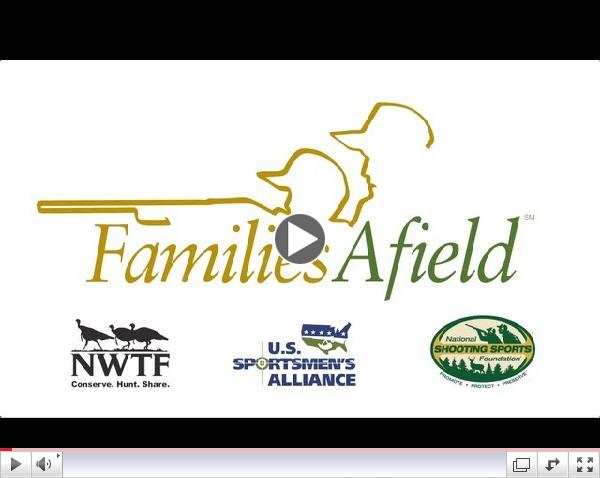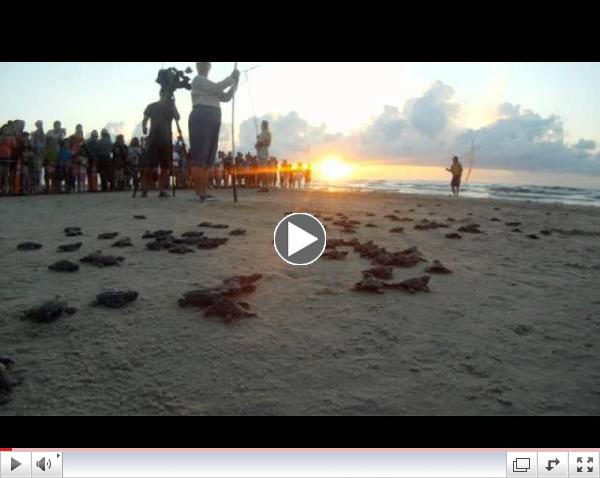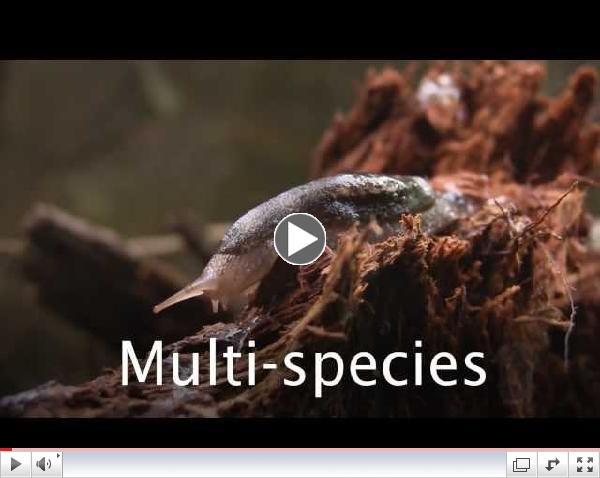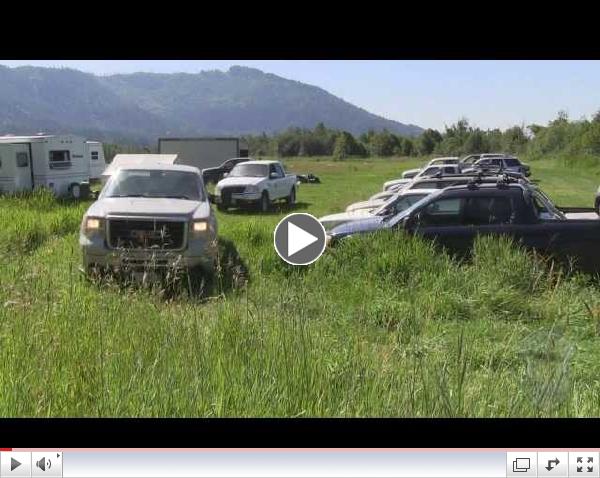|
Greetings Friend:
Happy New Year! Welcome to the second edition of the quarterly online Wildlife and Sport Fish Restoration Program WSFR Newsletter! We are excited to share with you the outstanding work the Wildlife and Sport Fish Restoration Program has on wildlife and habitat conservation and restoration.
This newsletter aims to highlight the great work of our dedicated partners. From educational awareness, science base initiatives, FWS regional highlights, a special message from WSFR Assistant Director Hannibal Bolton, to honors and more - it's all here in the WSFR Newsletter!
A special thanks to the contributors. Their stories from around the nation showcase the value of the WSFR program as it continues to thrive for more than 75 years and beyond. You can also be apart of the WSFR Newsletter! We welcome story ideas and links to your success stories and videos. For consideration, feel free to email your submissions to wsfrnewsletter@fws.gov. Thank you for your heartfelt support. Best wishes to you and yours in 2014!
Kim Betton
Editiorial Director
WSFR Newsletter
|
|
SPOTLIGHT
Major Milestone for Families Afield - 1 Million New Hunters!
National Program Reduced Barriers, Created Opportunities for Newcomers
By: Bill Dunn, National Shooting Sports Foundation (NSSF)
| |
The future of hunting is brighter today than it was nearly a decade ago thanks to the extraordinary success of Families Afield, an innovative program
 | |
Hunter at Selawik National Wildlife Refuge
Photo by: Steve Hillebrand
|
that has introduced
1 million newcomers to hunting.
This impressive number demonstrates that interest in hunting remains high and what's needed to spark a lifelong passion for hunting is a proper introduction enabled by state regulations. With success in hand, Families Afield's call to action is this: "If your state offers an apprentice hunting license, make it a point to bring a newcomer along this hunting season; or if you've never gone hunting before, seek out a mentor and give it a try."
Launched in 2004, Families Afield was developed to increase the number of hunters to ensure a promising future for the tradition of hunting and conservation. Hunters provide the lion's share of support for conservation through the purchases of hunting licenses and excise taxes paid on sales of firearms and ammunition.
Read more
 | |
VIDEO
Families Afield 1-Million Apprentice Hunters - NSSF Shooting Sportscast
|
|
|
Feature
Sea Turtle Hatchlings Wow Crowds on Texas' Padre Island
Coastal Impact Assistance Program contributes to project funding
By: Carly Vaughn, CIAP Project Manager, Coastal Resources Program, Texas General Land Office | |
It was a day filled with learning and excitement for area residents and volunteers as a joint sea turtle conservation project got underway on Texas' Padre Island National Seashore (PAIS).
 | | National Park Service Biologist Dr. Donna Shaver documents a Kemp's ridley sea turtle nesting on North Padre Island, Texas. Photo: National Park Service |
The goal is to help re-establish a nesting colony of Kemp's ridley sea turtles (Lepidochelys kempi). The project would not have been possible without funding through the Coastal Impact Assistance Program (CIAP) of the Wildlife and Sport Fish Restoration Program -U.S. Fish and Wildlife Service, the National Park Service, Texas General Land Office, and Texas Parks and Wildlife Department. CIAP funds were used to purchase equipment and services needed to investigate and protect nesting turtles, the nests themselves, and sea turtle hatchlings.
 | |
Kemp's ridley sea turtle hatchlings released a Padre island National Seashore
Photo by:Carly Vaughn |
Achieving re-establishment of the PAIS nesting population (as determined by nesting females) will help achieve the down-listing or delisting of this most endangered of all sea turtles. Because the project is labor intensive, funding for staff and equipment is critical to continuing restoration efforts.
Through media interviews, volunteer training, and distribution of educational materials, PAIS staff also helped to increase awareness about the importance of ensuring the survival of nesting sea turtles and their eggs.
 | |
A Kemp's ridley sea turtle set free during a public hatchling release at Padre Island National Seashore
Photo by: Carly Vaughn
|
Hundreds of area residents turned out to witness the excitement of the hatchlings being released. They also learned more about the dedicated teamwork that was put into this conservation initiative.
Over the course of the project, 663 Kemp's ridley nests, 38 green nests, and 23 loggerhead nests were located and transported to Sea Turtle Recovery incubation facilities where the eggs were monitored.
The sea turtle hatchlings were released at the beach about 20 yards from the surf.
By the project's end, 51,059 Kemp's ridley, 1,557 green, and 1,351 loggerhead hatchlings were released into the Gulf of Mexico.
From 2010 to 2013, PAIS staff and volunteers spent more than 60 thousand hours patrolling 468,100 sea miles of beach in search of nesting and stranded sea turtles. This overall team effort has placed another stamp on partnerships for wildlife conservation.
 | |
VIDEO
Kemp's Ridley Sea Turtle Hatchlings Released |
|
Feature
WSFR Program Touting Youth in Pivotal Role as Future Conservationists
By: Kim Betton, USFWS, WSFR Headquarters
| |
The Wildlife and Sport Fish Restoration Program (WSFR), which for more than 75 years has supported wildlife conservation and restoration through its dedicated partners, is encouraging youth to get outdoors - whether it's a day of fishing and boating with family and friends, hunting in the calm of the wilderness or wildlife watching along a peaceful park's trail - in an effort to help keep conservation and science going strong for the next seven decades and beyond.
The efforts are working. According to the 2011 National Survey of Hunting, Fishing and Wildlife-Associated Recreation 38 percent of all Americans ages 16 and older participated in wildlife-related recreation in 2011 - an increase of 2.6 million participants from the previous survey in 2006.
 | | 12-year-old Jami Bennett loves the outdoors. |
Jami Bennett, 12, knows first-hand what it's like to enjoy the outdoors and conservation. She has already received her hunting license and appreciates the lessons learned surrounding the purpose of conservation.
"I learned so much through my hunter education course prior to receiving my hunting license," says Jami. "I've since tagged three deer. When hunting you don't know what you are going to see. You might see turkeys, squirrels or deer - it's just so exciting!"
"You get quality time with your child without interruptions of television, phone, and so forth," adds Ron Bennett - Jami's father. "I just want to share a passion that I have of hunting and fishing with my child. It's a rewarding experience."
"When hunting, you're not hurting you're helping," says Jami."
Garrett Unbehagen began hunting and fishing when he was a toddler; now as a parent he is continuing the tradition by taking his sons out with him. "It was passed on to me by my dad, and to my dad by my grandfather.... And I'm passing it on to my two boys, " says Unbehagen.
 | |
1 -year-old Kaden Unbehagen enjoys watching his first ever squirrel hunt with his father.
|
"Being outdoors shows the youth so much," he adds. "It gets them off the video games, out the house, and it keeps them out of trouble. I just want to carry that tradition on and hopefully one day my kids will pass it on to their kids."
The 2011 survey said hunters nationwide increased 9 percent to a total of 13.7 million -reversing decades of a decline. The number of anglers grew 11 percent to more than 33 million. And nearly 38 percent of all Americans participated in wildlife- related recreation in 2011 - that's an increase of 2.6 million participants from the previous survey.
"These increases tell us that the outdoors is greatly appreciated," says WSFR Assistant Director Hannibal Bolton. "We must also be mindful that it's important for us to take the message to the urban communities," he adds. "We all have a responsibility to conserve our great natural resources and reaching out to the youth who are our future conservationists. This is what we must do to continue the success of the WSFR program for another 75 years and beyond." The WSFR Program, funded through the excise taxes on hunting, fishing and recreational shooting equipment, and motorboat fuel taxes, promotes conservation by returning that tax money to the states, which use it to enhance wildlife recreation and hunting and fishing opportunities.
Helpful Links:
Hunter Education
2011 National Survey of Fishing, Hunting and Wildlife-Associated Recreation
WSFR Webpage
|
 |
|
PARTNERS IN CONSERVATION
FEATURED VIDEO
Idaho Department of Fish and Game
 | |
Competitive State Wildlife Grants:
Multi-species Baseline Initiative Overview
|
 | | Multi-species Baseline Work-Shift Preview |
VIDEO SUMMARY:
In 2012 the U.S. Fish and Wildlife Service announced the award of $950,000 under its Competitive State Wildlife Grant Program to the Idaho Department of Fish and Game to help prevent "Species of Greatest Conservation Need" from becoming threatened, endangered, or extinct. As lead agency, the Idaho Department of Fish and Game is working with more than twenty partners from state, tribal, federal, university and nonprofit organizations to implement the "Multi-Species Baseline Initiative" (MBI).
The MBI focuses on acquiring distribution and abundance information for twenty species in the Idaho Panhandle, northeastern Washington and British Columbia. Biological data of these species, including rare forest carnivores, amphibians and terrestrial gastropods, will be collected over three years. All the species are identified in Idaho's and Washington's State Wildlife Action Plans (SWAPs) as Species of Greatest Conservation Need that are lacking essential information on their status.
Submit videos about partnership projects that support the mission of the Wildlife and Sport Fish Restoration Program to wsfrnewsletter@fws.gov .
|
 |
 |
 |
Washington's Union River Estuary restoration completed using National Coastal Wetland Conservation Grant funds
By: Sarah Bielski, USFWS, Portland, Oregon
After nearly 100 years of cattle and hay production, the salt marsh wetlands of the Union River Estuary in Lynch Cove, near Belfair, Washington, have been restored to replicate historical conditions. Tidal waters again flow in and out of the 32 acre saltmarsh, which were restored using funds from the U.S. Fish and Wildlife Service (Service) Wildlife and Sport Fish Restoration (WSFR) program's National Coastal Wetlands Conservation Grant (NCWCG) program.
 | |
North Mason School Dist. directors cut the ribbon to celebrate the completion of the Union River estuary restoration and the opening of the Theler Wetlands trail extension.
Left to right: Art Wightman,John Campbell, and Laura Boad
Photo by: Sarah Bielski, USFWS |
The October 25th ribbon cutting ceremony celebrated the completion of the project. The Washington Department of Fish and Wildlife (WDFW), Hood Canal Enhancement Salmon Group (HCSEG), North Mason County School District, Theler Wetlands Board, Skokomish Indian Tribe, Hood Canal Coordinating Council, and the Service each played a fundamental role in the restoration.
A project design group selected an approach that best balanced habitat benefits for fish and wildlife and education and recreation opportunities. In addition to the wetland restoration, the Theler Wetlands trail system was extended around the newly restored wetlands and was opened to the public at the ribbon cutting ceremony. The Theler Wetlands trail attracts nearly 200,000 visitors each year and now stretches across two miles of Hood Cancel shoreline.
 | |
Visitors enjoy the new trail and admire the restoration work. The bridge is one of two built over the areas where a 100 year old dam was breached. Photo by: Sarah Bielski, USFWS |
The completed Union River Estuary project is expected to greatly benefit many species of fish and wildlife. The site is located in one of the most important winter waterfowl areas in Hood Canal and South Puget Sound. The area is particularly attractive to large numbers of migratory birds and other fish and wildlife species that rely on the estuary and the surrounding saltwater wetlands for feeding and resting areas. The newly restored wetland also provides essential rearing grounds for juvenile summer chum and chinook salmon.
 | |
Wetland construction in August 2013. Photo by: Pad Smith, WDFW |
The majority of the recent restoration project was funded with $1 million from the NCWCG. Washington State provided $300,000. Other NCWCG projects were also awarded in the past for acquisition and restoration in the Union River and Lynch Cove area.
|
Sport Fish Restoration Funds Support Colorado State Fishing Program; A Staple for Conservation and Eduation
By: Amanda Horvath, USFWS, Denver, Colorado & Jim Guthrie, Colorado Parks and Wildlife
Colorado Parks and Wildlife's Fishing Is Fun (FIF) Program annually provides up to $900,000 in grant funds for angling improvements across the state using Sport Fish Restoration grant program funds, matched with local funding. Recipients of FIF funds range from local and county governments, park and recreation departments, water districts, angling organizations, land trusts and other agencies. 
Specific types of projects supported through Fishing Is Fun include stream and river habitat improvements, perpetual easements for public access, pond and lake habitat improvements, development of new fishing ponds, and improve angling amenities such as shade shelters, benches and restrooms.
Over 25-plus years the Fishin Is Fun program has funded more than 350 projects across Colorado, in the smallest towns on the eastern plains and western slope to major metropolitan areas along the Front Range. While Fishing Is Fun requires a minimum 25 percent in non-federal match, projects commonly average more than 40 percent match. In addition to the cash funding in a project, community support in many proposals includes donated materials and supplies, professional design and engineering services, volunteer labor from angling groups, Boy Scouts, 4-H groups and private donations.
Project ideas have their genesis at the local level, with area Parks and Wildlife aquatic biologists and district wildlife managers available to provide technical advice and assistance. Proposals are submitted to the FIF Coordinator at the beginning of March each year for internal review, which can include suggested
refinements. Each applicant then makes a presentation on the project to an independent review panel consisting of volunteer representatives from fishing-related businesses, angling organizations, and local governments. A representative from the regional WSFR office also serves on the panel. The panel makes funding recommendations, which are reviewed and approved by the Colorado Parks and Wildlife director.
In metropolitan areas around Denver, Ft. Collins and Colorado Springs, Fishing Is Fun has helped create or develop access to dozens of fishing opportunities on ponds and lakes in the midst of urban neighborhoods. In addition, several recent projects have focused on habitat improvements and new fishing access on the South Platte River, which flows through the heart of Denver. These projects bring a different type of fishing opportunity "closer to home" for hundreds of thousands of urban youth.
 | |
Fishing Is Fun project: Fishing access to the Animas River, Durango, CO
Photo by: Amanda Horvath
|
Experience has also shown tremendous benefits from the cumulative impact of multiple projects over several years. A series of FIF investments over 10-12 years have helped make the Yampa River in Steamboat Springs and the Arkansas River in Pueblo destination angling spots. In fact, Fly Fisherman magazine named the Arkansas River below Pueblo Reservoir as one of the top ten tailwaters in the nation. Starting in 2007 and continuing through today, West Denver Trout Unlimited, Clear Creek and Jefferson Counties, a private family foundation, local businesses, economic development funds and many others have joined with FIF to invest $1.2 million in a half-dozen projects to significantly expand habitat conditions and improve public access along 30 miles of a brown trout fishery in Clear Creek.
In small communities, FIF projects may be lower cost, but they can have an
out-sized beneficial impact. In the town of Eads in southeastern Colorado (population 624), Fishing Is Fun funding was crucial in turning Jackson's Pond into a focal point of community activity as well as giving kids from towns in
surrounding areas an outdoor recreational activity, away from video games. Hudson Pond in the northeastern part of the state was completed in 2012 and has already become a major draw for town residents and those from nearby communities. In these and dozens of other cases, Fishing Is Fun support was an irreplaceable catalyst in generating and ultimately establishing new angling opportunities.
A recent economic study found that fishing recreation annually contributes more than $1.2 billion to Colorado's economy through direct and secondary expenditures, and more than 14,500 jobs. That translates into employment in thousands of local businesses, including angling and sporting good shops, guide services and fishing equipment manufacturers, as well as restaurants, grocery stores, hotels and motels, gas stations and many more. Particularly in rural areas, a viable angling resource can be a major economic asset.
The Colorado Fishing Is Fun project brings together communities, local businesses, governments and angling groups to provide fishing access and improve the quality of the habitat for the local fishery. The partnership with the US Fish and Wildlife Service's Sport Fish Restoration grant program has provided the opportunity for these organizations to enhance Colorado's angling tradition and legacy.
|
WSFR Joins Federal Agencies at Annual Historically Black Colleges and Universities (HBCUs) Facing Forward Conference
By: Kim Betton, USFWS, WSFR, Washington, DC
The U.S. Department of the Interior joined several federal agencies at the 2013 National Historically Black Colleges and Universities Week Conference at the Washington Hilton Hotel. The two-day event in September highlighted significant contributions HBCUs have made for students across America.
The year's theme was called, "HBCUs Facing Forward: A New Paradigm for Educating the 21st Century Student. Representatives from HBCUs and the federal government discussed opportunities that can assist college students with career and educational goals.
 | |
Brenda Woods, Program Manager, DOI Educational Partnerships Program - talks with conference participant at the DOI booth. Photo by: Kim Betton, USFWS,WSFR Program
|
Federal agencies, including DOI, volunteered at the conference through lectures, workshops and exhibit hall
booths.
Conference goers who visited DOI's booth got the chance to learn about Interior's overall mission
- and how its partnering agencies work together to achieve goals for this great country.
The Wildlife and Sport Fish Restoration Program (WSFR) had a presence at the DOI booth. WSFR shared information about the 2011 National Survey of Fishing, Hunting and Wildlife-Associated Recreation and conservation initiatives.
A major highlight of the event included a keynote address from Ernest Green, the first African American to graduate from Little Rock Central High School amid the desegregation struggles of the Little Rock School District in 1957. Civil rights leader Dr. Martin Luther King Jr. attended Central High's graduation that year to honor Green for his outstanding achievements. Green's inspiring words at the HBCU Facing Forward conference reminded the audience about the importance of continuing education - and the value effective leadership and guidance can have on youth.
|
WSFR Headquarters Chief of Policy Branch Recognized for 40 Years of Federal Service
By: WSFR Headquarters Policy Branch
The Wildlife and Sport Fish Restoration Program's chief of Policy Branch Tom Barnes is being recognized for 40 years of Federal Service. The WSFR program presented Tom with a plaque honoring and thanking him for his steadfast commitment and dedication through the years. Tom is a long-time FWS/WSFR Headquarters employee, but his experience goes well beyond the Service. He began his federal career in the U.S. Army 1967.
He later attended Florida State University and the University of Michigan where he majored in natural resource management and qualified as a forester. In 1976, the U.S. Forest Service's Southeastern Forest Experiment Station hired him to collect data on Forest Survey plots in southwestern Virginia and the South Carolina Piedmont and Low Country.
 | | Left to right: WSFR Asst. Dir. Hannibal Bolton, Thomas Barnes, Peter Barlow, Lisa Van Alstyne - WSFR Headquarters Photo by: Kim Betton, USFWS, WSFR Program |
The following year, he transferred to the Fish and Wildlife Service as assistant manager of St. Vincent National Wildlife Refuge, which is mostly a barrier island in West Florida. He then spent 4 years as an assistant manager at two new bottomland-hardwood refuges in northeastern Louisiana where he coordinated a master-planning process for D'Arbonne refuge. Tom moved to the northern Everglades in 1982 as the deputy project leader of the Loxahatchee and Hobe Sound refuges, where he focused on invasive-plant control and water-quality and quantity problems. He moved a second time to Louisiana as manager of a project to acquire 19,000 acres in east New Orleans for the newly authorized Bayou Sauvage Urban National Wildlife Refuge. In 1990, he moved to eastern North Carolina to coordinate the transfer of a 93,000-acre donation of Southeastern shrub-bog habitat from The Conservation Fund, which led to the establishment of Pocosin Lakes National Wildlife Refuge.
Tom was then selected for the Departmental Managers' Development Program during which he worked on a 3-month detail in the Stewardship division of The Nature Conservancy and a 9-month detail with the Interior Appropriations subcommittee. After a year in the Partners for Fish and Wildlife program, he worked in the Refuge Headquarters office from 1993 to 1998 where he was part of a team effort that resulted in a $43 million increase in the Refuge Operations and Maintenance budget. Tom worked for 6 years in the Division of Bird Habitat Conservation administering grants and developing policy for grant administration under the North American Wetlands Conservation Act. In 2004, he moved to WSFR, which administers 20 of the Service's 60 grant/cooperative-agreement programs. In addition to Policy Branch Chief, Tom is one of the 12 members of the Joint Federal/State Task Force for Federal Assistance Policy.
 | |
Tom Barnes smiles at the plaque honoring him for 40 years of federal service. Photo by: Km Betton, USFWS, WSFR Program
|
A major accomplishment of the Policy Branch was the 2011 publication of a comprehensive revision of the regulations that implement the Pittman-Robertson and Dingell-Johnson Sport Fish Restoration acts. These regulations govern the apportionment of revenue from Federal excise taxes or import duties on: (a) equipment and gear for hunters, anglers, archers, and recreational shooters, and (b) motorboat and small-engine fuel. The regulations also govern the award and administration of grants in the Wildlife Restoration, Sport Fish Restoration, and Hunter Education programs which made about $900 million available to States in fiscal year 2013.
The Policy Branch worked with others to develop a proposed rule to revise the program regulations for the Boating Infrastructure Grant program. This proposed rule received the 2013 ClearMark award from the Center for Plain Language for clear communication and plain language. Tom is currently working on a comprehensive policy for land acquisition under a grant. The Policy Branch has collaborated with the WSFR Lands team and the State fish and wildlife agencies to complete this groundbreaking policy, which is currently working its way through the Service's review and approval process.
|
Feature Photo
Do you have a photo that you'd like to have featured in the WSFR Newsletter? Email it to wsfrnewsletter@fws.gov. Your photo must reflect the values of the Wildlife and Sport Fish Restoration program. |
 | | A day at the marina as family fishes under the sunset. Source: U.S. Fish and Wildlife Service Digital Photo Library |
|
 |
 |
 |
 | |
DAWR , Groundbreaking
Photo by: Tino Aguon,
USFWS |
 | |
DAWR, Contruction
completed-
Dedication ceremony
Photo by:Edward Curren,
USFWS |
|
Dedication, New Facility in Guam supports
Fisheries
The U.S. Fish and Wildlife Service's Wildlife and
Sport Fish Restoration (WSFR) Program provided
$935,000 in funding to build a new Fisheries Section
building for Guam's Division of Aquatic and Wildlife
Resources (DAWR). The new facility provides offices,
laboratory and conference room as well as enclosed
boat storage. A stand-by generator provides power
during power outages. Fisheries staff was glad to
move from their old office building - a temporary
structure from the early 1990's that provided cramped office space and failing floorboards.
|
 | |
WSFR's Joyce Johnson,
SOBA honoree, James
Adams, Immediate Past
President, SOBA |
 | |
Doug Hobbs,
SOBA honoree |
|
State Organization for Boating Access (SOBA) Honors Service Employees Joyce
Johnson and Doug Hobbs
Fish and Wildlife Service employees Joyce Johnson and Doug Hobbs are the recipients of the 2013 Outstanding Service Award! They received the honors during the 2013 National Boating Access Conference. Johnson is special assistant for program analysis and development for the WSFR program. She's worked diligently to address a wide range of issues associated with the administration of federal grant programs that distribute funding to state and local governments for recreation and natural resources conservation purposes. Hobbs is a federal officer for the Sport Fishing & Boating Partnership council. The Council provides advice on a wide range of matters relative to recreational boating, sport fishing, and issues of access to and on water. Doug has initiated and encouraged Council leadership to adopt a more balanced approach to Council priorities. | |
| |
|
| |
|
|
|
|
|
WSFR
Assistant Director's
Column |
 | |
Hannibal Bolton, Asst. Dir. Wildlife and Sport Fish Restoration Program, U.S. Fish and Wildlife Service |
|
|
A New Year's Resolution:
Let's encourage others to get outdoors!
Happy 2014! It's that time again when so many Americans are setting their New Year's resolutions ...and hoping to achieve them! A great suggestion to add to your list - encourage a friend, family member, colleague, etc. to get oudoors and have a great time while supporting wildlife and habitat conservation initiatives.
Some suggestions would be to visit a state park; visit an archery range; become a licensed hunter; go fishing; enjoy bird watching; spend a day boating on the lake, and there is so much more!
Getting outdoors is valuable and a great way to spend time with family and friends; all the while placing your stamp on conservation.
It works like this - if you ever purchase fishing lures, rods and reels, firearms, ammunition, hunting or fishing licenses, bows, arrows, or boating fuel, you're a part of the most successful effort to conserve fish and wildlife in America - the Wildlife and Sport Fish Restoration Program. Funds from those purchases are used for activities such as: fish and wildlife population management, habitat management, research, surveys and inventories, land acquisition, construction and maintenance of wildlife management areas, hatcheries, aquatic resource education, hunter education and safety training, boating access facilities, shooting and archery ranges.
Our industry partners have helped to foster successful conservation efforts totaling more than $14 billion for more than 7 decades now - we are grateful for the continued support. And a special thanks to you for taking the time to introduce someone you know to the outdoors this New Year! Trust me - you will find it to be a rewarding experience.
Wishing you all the best in 2014!
- Hannibal |
 |
WSFR 75th Anniversary and Beyond Publication
| |
|
2011 National Survey of Fishing Hunting and Wildlife Associated-Recreation
| |
|
|
WSFR IN THE NEWS
National Headlines |
|
79th Annual North American Wildlife and Natural Resources Conference
March 9-14, 2014 Denver, CO
Visit Website
|
|
Story Idea?
If you have a story idea or article you'd like to contribute to the WSFR Newsletter that is great! Please contact the edtior at wsfrnewsletter@fws.gov. Thank you! |
|
 |
|